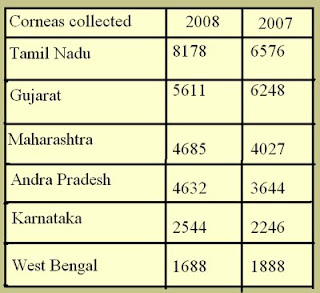A lot of readers have come here searching for doodh pauva recipe. I had mentioned it quite some time back in this post about some two-minute snacks i indulge in.
Here's a better, richer version for the doodh pauva you make for Sharad Poonam (or Kojagiri Purnima as we call it), an auspicious full-moon day in the Hindu calender. This recipe is not a two-minute thing though :) This is how my grandmother makes special masala milk for poonam. She spends a lot of time and effort to thicken the milk considerably due to evaporation. This involves a close vigil and constant stirring. I have never made this myself but sharing what I have seen her do, shortening the time to suit impatient souls like me.
Ingredients:
Pauva (flat rice flakes) - 1 cup (Washed well in potable water and kept aside soaked in little water minutes before serving. Washing a lot or soaking for a long period will make it mushy, and you don't want that)
Milk- 500 ml, preferably full fat
Kesar* strands- half a teaspoon
Elaichi*- 2-3, crushed to fine powder
Peeled soaked almonds- 6-7
Raisins (washed well and dried), Kaju*, Pista if available.
Sugar
First you must prepared flavoured (or masala) milk. For this, heat kesar in a thick steel spoon or cup for 10-15 seconds directly over the flame, do not burn and keep stirring with another spoon. The spoon / vadki* you have used to heat kesar will get hot, so handle with care. Crush the heated kesar well using another spoon. Add a spoonful of milk to this and set aside.
Boil milk in a heavy bottomed pan on low flame Add sugar (about two-three tablespoons should be enough, adjust according to taste) and stir constantly. Constantly. Bring to boil. Let it simmer and come to boil two more times, this should take about 10-15 minutes. Do not increase the flame, be patient and boil on low flame or you will burn the milk. I feel it's better to have hot, favoured milk than thick creamy evaporated milk that is badly burnt and so is useless.
About 2-3 minutes before switching off the burner, add chopped almonds, cashew, pista and raisins (whole) and elaichi powder. Also add some more milk to the soaked kesar you have kept aside and add this to the boiling milk. Make sure you up all the kesar extract in the cup.
With this, the flavoured milk part is done. We usually have just this.
Aaji soaks very little pauva separately for ceremony's sake sometime. Not everyone likes the taste of sweetened pauva, so I suggest you also do not add all the soaked pauva to flavoured milk at a time. Instead, you can add spoonfuls to milk as desired by guests. I like this milk (and pauva) chilled, many prefer it hot.
Here's a better, richer version for the doodh pauva you make for Sharad Poonam (or Kojagiri Purnima as we call it), an auspicious full-moon day in the Hindu calender. This recipe is not a two-minute thing though :) This is how my grandmother makes special masala milk for poonam. She spends a lot of time and effort to thicken the milk considerably due to evaporation. This involves a close vigil and constant stirring. I have never made this myself but sharing what I have seen her do, shortening the time to suit impatient souls like me.
Ingredients:
Pauva (flat rice flakes) - 1 cup (Washed well in potable water and kept aside soaked in little water minutes before serving. Washing a lot or soaking for a long period will make it mushy, and you don't want that)
Milk- 500 ml, preferably full fat
Kesar* strands- half a teaspoon
Elaichi*- 2-3, crushed to fine powder
Peeled soaked almonds- 6-7
Raisins (washed well and dried), Kaju*, Pista if available.
Sugar
First you must prepared flavoured (or masala) milk. For this, heat kesar in a thick steel spoon or cup for 10-15 seconds directly over the flame, do not burn and keep stirring with another spoon. The spoon / vadki* you have used to heat kesar will get hot, so handle with care. Crush the heated kesar well using another spoon. Add a spoonful of milk to this and set aside.
Boil milk in a heavy bottomed pan on low flame Add sugar (about two-three tablespoons should be enough, adjust according to taste) and stir constantly. Constantly. Bring to boil. Let it simmer and come to boil two more times, this should take about 10-15 minutes. Do not increase the flame, be patient and boil on low flame or you will burn the milk. I feel it's better to have hot, favoured milk than thick creamy evaporated milk that is badly burnt and so is useless.
About 2-3 minutes before switching off the burner, add chopped almonds, cashew, pista and raisins (whole) and elaichi powder. Also add some more milk to the soaked kesar you have kept aside and add this to the boiling milk. Make sure you up all the kesar extract in the cup.
With this, the flavoured milk part is done. We usually have just this.
Aaji soaks very little pauva separately for ceremony's sake sometime. Not everyone likes the taste of sweetened pauva, so I suggest you also do not add all the soaked pauva to flavoured milk at a time. Instead, you can add spoonfuls to milk as desired by guests. I like this milk (and pauva) chilled, many prefer it hot.
*Pauva / Poha / Cheere- Flat rice flakes used in many Indian snacks
Kesar- Saffron
Elaichi- Cardamom
Kaju- Cashew
Doodh- Milk
Vadki- A small (steel) bowl in Gujarati

Masala milk for doodh pauva that Aaji made on October 23, 2010

































